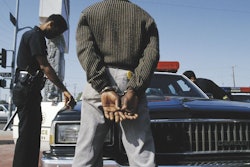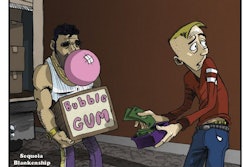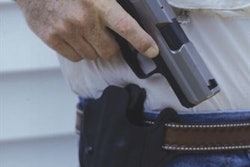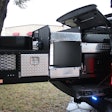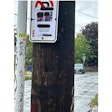In the Southeastern U.S., a 10:40 p.m. traffic stop for driving without headlights led to the death of a 23-year-old sheriff’s deputy. Unknown to the officer, the car had been taken in an armed robbery earlier that day. The deputy asked the male driver to get out of the vehicle. While the officer was focused on the passenger who was searching for registration papers, the driver approached the deputy from behind and shot him eight times with a 9mm pistol. The last shot struck the deputy in the head after he had fallen to the ground.
It is easy to get careless while engaged in something you do a great deal. If you are a uniformed police officer and don’t work in a jail, chances are that traffic and vehicles are the bread and butter of your existence.
Because you do so much of it, it is perhaps understandable (although not acceptable) that sometimes you don’t pay as much attention to your safety during traffic enforcement as you should. You already know that someone at your next traffic stop may be the one waiting for the opportunity to kill you. The important thing is that you keep that reality in mind every time you walk up to a vehicle.
What are some of the worst mistakes you can make on a traffic stop? Even more important, how can you avoid committing these potentially deadly errors? Read on.
Complacency Kills
Because they do it so much, if traffic cops aren’t careful they begin to crank out tickets in assembly-line fashion. There is nothing wrong with being efficient. The key is to not let yourself go on auto pilot. Keep looking out for problems even while filling out an invitation to court.
It is important that you remain mindful of everything going on around you for the duration of a traffic contact. That means carefully tracking everyone present until you are completely out of their presence.
One way to do this is to have everyone remain in their vehicle for the duration of the contact. If things start to get more complicated—such as learning the driver is intoxicated or has an outstanding warrant—it’s time to have a cover officer on scene to watch out for your safety as you conduct the primary business of the contact.
It is only human to not be 100-percent aware at all times. However, good officer survival skills require that you keep all of your mind on your business for the duration of a vehicle contact.
Bad Habits
By now you know how to follow excellent officer safety practices. You have trained that way since your academy days. The reality is, however, that when it’s really hot, really cold, snowing, raining, near end of shift, or whatever, it’s just too easy to cheat a little, to cut a few corners on your safety checklist. It saves a little time and effort. It’s not as if you want something bad to happen. But something could if you allow safety lapses to become so ingrained in your daily traffic contact practices that they become a habit, and a very bad one at that.
One good way to avoid bad habits is to critique yourself from time to time. Step back and really look hard at how you do things, particularly in the realm of safety practices. Be honest with yourself. Are you starting to cheat a little, even though you know the right way to do it? If you decide that you are, in fact, falling into some bad habits, determine to address the problem right away. The only habit you can afford to get into is one that ensures you will do it the right way—the safe way—every time.
Dangerous Assumptions
The fact is, you probably don’t really know what else that red-light violator did in the minutes, hours, or days before you stopped him. The information advantage is all with him. If he has indeed raped, robbed, and pillaged his way across the landscape, he knows it. He assumes that you know it, too, or will as soon as you run him through the computer. He knows additionally that if he’s going to do something to avoid capture (like kill you, for instance), now is the last opportunity to do it.
You, on the other hand, know only that you’ve just stopped a traffic violator. The rest of that ugly picture is waiting to surprise you. Making a reckless assumption can kill you on a traffic contact. The only thing you can safely assume is that every contact you make brings with it the possibility of a deadly surprise. A veteran street cop summarized it nicely: “If he’s willing to rape, rob, and murder, what makes you think he isn’t going to run red lights, too?” It’s true enough. Avoiding dangerous assumptions on traffic contacts will help get you through to a healthy retirement.
Poor Street Position
Standing too far out in a traffic lane during a vehicle stop will do it. So will standing between the front bumper of the police car and the rear bumper of the violator’s vehicle. Ditto for approaching on the driver’s side of the car on a high-speed roadway when a passenger-side approach is an option. What any of these errors will do, or course, is get you killed or maimed. You cannot afford to do any of them.
Where and how you move in relation to your vehicle, the violator’s ride, and all of the rest of the vehicular traffic present will help determine whether your contact is completed in safety or not. Staying aware of all of your surroundings all of the time can help ensure your continued safety.
That means keeping that third eye focused on cars that are approaching from behind you as you approach the violator’s vehicle. It also means listening intently for anything and everything that might be coming your way. And it means remaining conscious all the while of where you can safely move, and which areas you must stay out of. In a sudden emergency, that awareness could keep you from propelling yourself into the path of danger.
Scene awareness also requires you to remain alert to the location of good cover at all times, just in case you need to get there in a hurry. Think of more cover options than your car. If a big, fat tree beside the road represents a better shield than the thin metal of your car’s door, that’s where you want to be if gunfire appears likely.[PAGEBREAK]
Position of Disadvantage
Staying safe from vehicular traffic is not enough. You must also position yourself so as to keep a potential attacker from getting the advantage over you.
One of the last things you want to do is place yourself so that a driver or passenger looking to the left sees nothing but a blue-clad belly filling the driver’s side window. That view might prove just too tempting for a villain with a gun and the willingness to use it. Instead, remain back of the leading edge of the driver’s door so that he has to turn and look over his left shoulder to see (or target) you. That way, you’re putting him at the disadvantage.
If you are in contact with a subject outside of his vehicle, maintain a reactionary gap of several feet between the two of you so that you have time to respond effectively to a surprise assault. Remain alert and don’t allow him to stand too close while you’re filling out a summons or report. If necessary, politely ask him to stay put.
Don’t position yourself between two or more parties you’ve taken out of a vehicle. Keep all of them at a safe distance. Don’t try to deal with too many at once, either. You probably can’t safely track more than two people outside of a vehicle, so call in a cover officer if there are more than that to keep watch on. Always maintain the physical advantage in your own favor on a traffic contact. If the on-scene picture is not advantageous for you, change it.
Getting Distracted
These days, the buzz phrase for trying to do a lot of things at the same time is “multi-tasking.” Some of us do it better than others. The truth is, however, that you can only carry out a limited number of tasks simultaneously without neglecting one or more of them. When maintaining your personal safety is one of those key responsibilities, it’s easy to see how not giving it 100 percent of your attention can lead to disaster.
Today’s cop has more tools at his or her disposal than ever. For all the benefits it has brought, the in-car computer terminal has added one more distraction that sometimes keeps your head down instead of on a swivel, looking out for trouble. Then, there’s the age-old distraction of having your eyes pointed downward writing a traffic ticket while you at the same time try to keep track of your driver’s antics. If he’s got passengers or there are other distractions such as traffic or pedestrians in the area, your job just got harder.
The safety solution for you is to realize that there are only so many things you can safely attend to at one time. Watch your violator as you listen for a response over the radio. Shift your gaze in his direction repeatedly as you scan a computer screen or keyboard. If there are simply too many tasks or too many people to track simultaneously, summon a cover officer to serve as your lifeguard while you complete your more mundane duties. Don’t lose sight of the fact that your safety demands that the people you are dealing with remain the primary focus of your actions.
Ignoring Your Sixth Sense
Don’t fail to call for backup when “it doesn’t feel right.” Whatever you call it, that little voice you hear is the result of common sense, training, and experience letting you know that hazardous terrain lies ahead. Failing to do something about that warning has led to the death or injury of more than a few law enforcement officers. You do not want to join their ranks.
There are probably as many reasons for not summoning help as there are officers on the casualty list: The other guys are busy. They’ll think I’m afraid. The sergeant will think I can’t handle my beat. The violator will lose respect for me. Or whatever.
The fact is, you only make the situation worse if you fail to call for needed assistance and the situation deteriorates into one where your peers must rescue you from a fight (or worse) that never had to take place. If the back of your neck is starting to tickle, if things don’t look, sound, or smell right to you, slow things down and get cover on the way.
Be prepared to back off a bit until you have help at your elbow. Then, continue to proceed with caution. You haven’t troubled anybody. To the contrary, you might have just saved a life. Maybe your own.
It is also vital that you recognize when a traffic stop is morphing into a high-risk vehicle contact. An example might be found in a scenario where you learn your red-light violator is actually wanted on a felony warrant. It’s time for a change in tactics. In other words, do not walk back up to the driver’s window. Once you have help on scene, you will want to direct the suspect back into your area of control, perhaps to prone him out while you remain behind cover.
Needless Arguments
Periodically, the investigative account of a peace officer killing includes the mention that the officer got into a “verbal dispute” with the violator just before being killed on a vehicle-related contact. The nature of your job dictates that not everyone is going to agree with you. It requires that you gain and maintain control of the interaction. You have already lost if you lower yourself to engage in a shouting match with a traffic violator. You will almost certainly come out the loser if you get into a heated argument. Internal affairs investigators’ days are filled up with cops who lost it on a traffic contact. Much worse, however, is the argument that deteriorates to the point that a physical altercation ensues. It is in these disputes that, on occasion, a cop gets disarmed and killed with his own weapon.
Finally, also be sure to make a clean “break” from the contact. Watch your back as you return to the police car and keep track of the violator until one of you has departed. Even then, check to make sure he is not shadowing you.
None of this has to happen. By keeping your cool, maintaining your professionalism, and staying several levels above the behavior of the traffic offender, you remain in control of the situation while keeping yourself safe. It’s often not easy when you are confronted by a braying jackass who is “going to have your job.” But it is worth the effort for the problems your self-restraint prevents. It certainly cuts down on your meetings with internal affairs. It likely reduces the number of times you must appear in court. Most important of all, it will drastically reduce the likelihood of your wrestling around in the gutter with a traffic violator who just went over the edge.




